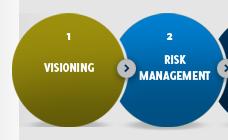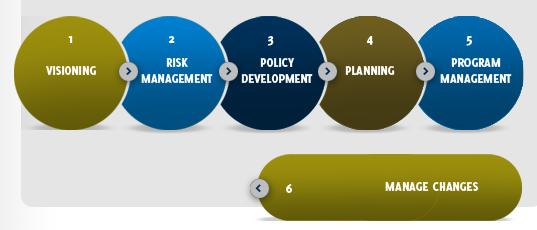Ran out of money.... criteria for an asset management process
15 June 2012 • John de Croon
asset management strategie, risk management, policy development, planning, program management, manage changes
In the Netherlands, as in other Western countries, the medical sector goes through major changes. This sometimes leads to new phenomena. There was commotion around 20 December 2011. The Tweesteden hospital in Tilburg and Waalwijk refused to help patients who were insured at Achmea until the end of the year. The hospital said that they ran out of money and there was no budget anymore for that insurer for the rest of the year. However treatments which were already started were not cancelled and urgent care was still delivered. Involved patients could come back after 2 January 2012 for treatment[1]. In theNetherlands insurers and hospitals agree with each other how many treatments are reimbursed per year. Tweesteden hospital did not want to pay for the extra costs and Achmea did not want to allocate more budget.
In the text above a few things are described which apply for asset management as well. I will discuss these shortly. This leads to the asset management process. Hereby the Asset Manager is insurer, the hospital is the Service Provider (see our column on the split of roles).
Insurers look at the long term. Long term trends include aging and people find cosmetic treatments more important than before. This means that the insurer faces the risk that more care is consumed than which is paid for. A policy measure is to work with budgets per hospital. This process is called ‘visioning’. The analogy to asset management is that the Asset Manager must have insight into the long-term trends and their impact on the asset base. The Asset Manager draws up policies and has determined what is urgent and what is not.
Achmea patients who needed an urgent treatment, were still helped. Also in asset management real problems, regardless of size, always have to be resolved. This can be solved to separate the estimation and the budget in the first decision. So first is determined which the non-acceptable risks are. An initial decision is made on the basis of priorities, where the risk level is the starting point. We call this ‘Risk management’. So in the second process, risks are analysed. The first contours of the process are visible below.

An insurer defines long-term measures. For example, for an insurer it is attractive to avoid diseases (diseases imply large expenditure). Asset managers do basically the same in the process 'Policy development'.
Making the estimation of the number of treatments per year of Achmea and Tweesteden is done in the ‘Planning’ process. Also in asset management there is no unlimited budget. An Asset Manager does not like to spend money, but if necessary the best possible value should be added. When an Asset Manager wants to add a maximum value, it means that an asset manager should have several investment proposals, from which the proposal is selected with which results in the maximum added value. Therefore, a prioritisation should be possible in which proposals are rejected as well. This provides a portfolio[2]. The process that goes with it is called ‘Planning’.

The estimation of the number of treatments of Achmea and Tweesteden was pretty good. The deviation with respect to the planning was roughly 3%. To obtain specific insight into the progress of the work is executed in the process 'Program management'. We know from our experience that many Asset Managers do not know what the status of the work is. Not infrequently we come across that only 70% of the planned work is finished at the end of the year. The Asset Manager should manage on program level. The Service Provider does so on project and activity level[3]. This results in the following process:

For the involved patients it was quite annoying that they could no longer be helped. For the hospital, as a Service Provider, it is commendable that they comply with the agreements. But because the hospital is not to allowed to deal with deviations of 3%, it means that there is no possibilities are defined for changes in the contract, or even a bonus / malus system. So a process is lacking. This is the process of managing changes.

To conclude therefore a hint for Achmea and Tweesteden: consider a change management process.
John de Croon is partner at AssetResolutions BV, a company he co-founded with Ype Wijnia. In turn, they give their vision on an aspect of asset management in a weekly column. The columns are published on the website of AssetResolutions, http://www.assetresolutions.nl/en/column
<< back to overview
|


